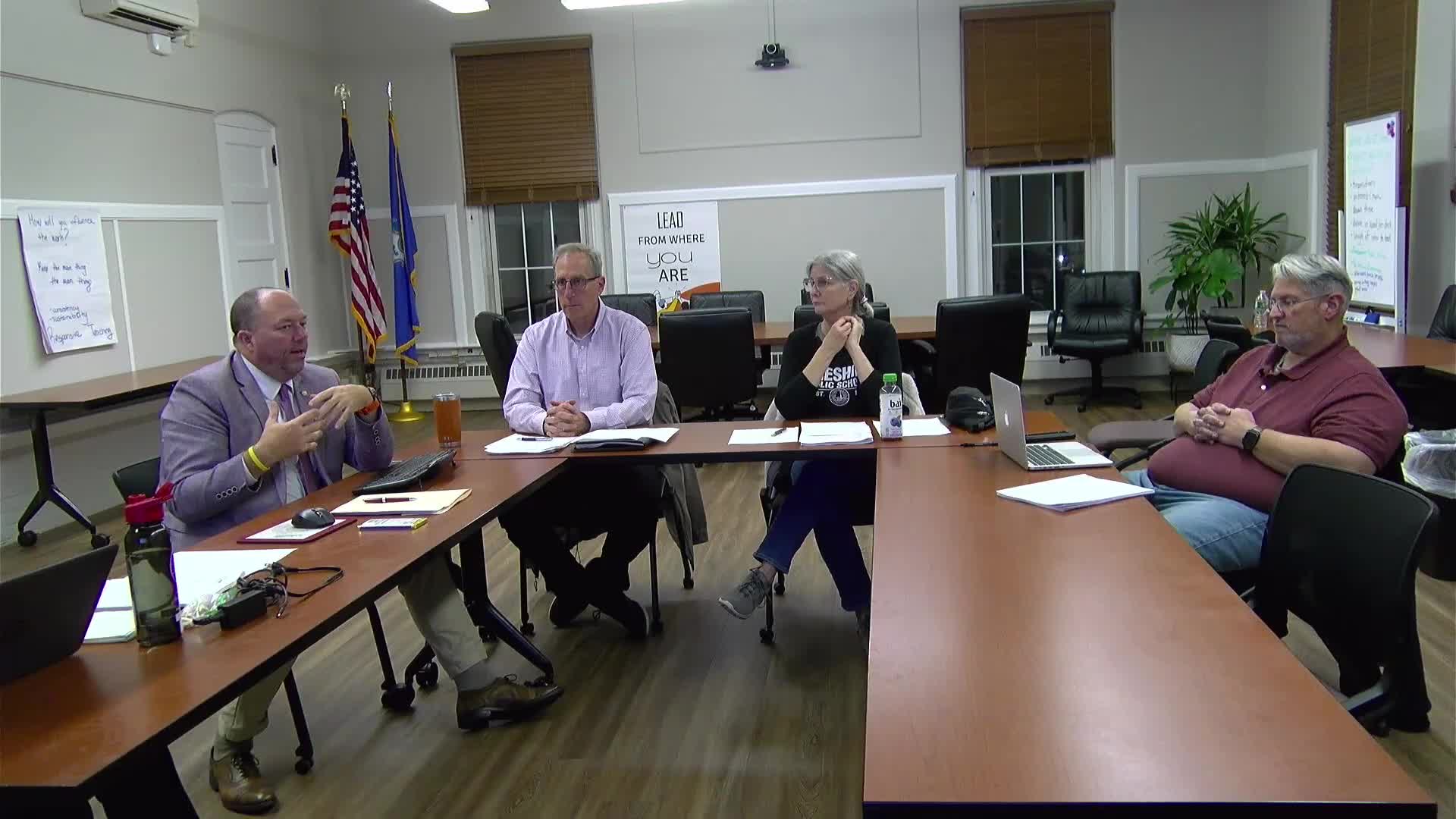Cheshire School District updates suicide-prevention policy; board seeks clearer wording on non‑imminent-risk follow-up
November 03, 2025 | Cheshire School District , School Districts, Connecticut
This article was created by AI summarizing key points discussed. AI makes mistakes, so for full details and context, please refer to the video of the full meeting. Please report any errors so we can fix them. Report an error »

District staff presented an updated suicide-prevention and intervention policy — noted as the first substantive revision since 1996 — and described how the district routes students to appropriate supports and when families are notified.
"This is our policy around suicide prevention and intervention that had last been updated in 1996," said Speaker 1. Staff described a stepped process for referrals to supports: beginning with school-based outreach, involving pediatricians or community resources for lower-level needs and Wellmore (a community behavioral-health receiving service) for higher-acuity, after-hours or emergency needs.
Board members pressed staff for clearer language about cases that are evaluated as not presenting an "imminent risk." Staff said that even when a student is not determined to be at imminent risk, the family is still notified and the district does not simply return the student to class without follow-up. "If we determine you're at risk right now, then you're going to be seen. If we don't determine you're at risk, . . . we still communicate with the family," Speaker 1 said.
Members also asked how the district would respond if a student attempted to leave the premises during an evaluation. Staff explained responses vary by age and circumstance and could include staff trained in physical intervention or contacting 911 in higher-risk situations.
Staff committed to review the draft policy language to ensure it explicitly addresses post-evaluation follow-up and family notification when an imminent risk is not identified and to solicit input from other district professionals as appropriate.
Next steps: the board moved the suicide-prevention policy forward as part of a set of policies for a first reading; staff will return with clarified language and any recommended edits.
"This is our policy around suicide prevention and intervention that had last been updated in 1996," said Speaker 1. Staff described a stepped process for referrals to supports: beginning with school-based outreach, involving pediatricians or community resources for lower-level needs and Wellmore (a community behavioral-health receiving service) for higher-acuity, after-hours or emergency needs.
Board members pressed staff for clearer language about cases that are evaluated as not presenting an "imminent risk." Staff said that even when a student is not determined to be at imminent risk, the family is still notified and the district does not simply return the student to class without follow-up. "If we determine you're at risk right now, then you're going to be seen. If we don't determine you're at risk, . . . we still communicate with the family," Speaker 1 said.
Members also asked how the district would respond if a student attempted to leave the premises during an evaluation. Staff explained responses vary by age and circumstance and could include staff trained in physical intervention or contacting 911 in higher-risk situations.
Staff committed to review the draft policy language to ensure it explicitly addresses post-evaluation follow-up and family notification when an imminent risk is not identified and to solicit input from other district professionals as appropriate.
Next steps: the board moved the suicide-prevention policy forward as part of a set of policies for a first reading; staff will return with clarified language and any recommended edits.
Don't Miss a Word: See the Full Meeting!
Go beyond summaries. Unlock every video, transcript, and key insight with a Founder Membership.
✓
Get instant access to full meeting videos
✓
Search and clip any phrase from complete transcripts
✓
Receive AI-powered summaries & custom alerts
✓
Enjoy lifetime, unrestricted access to government data
30-day money-back guarantee

